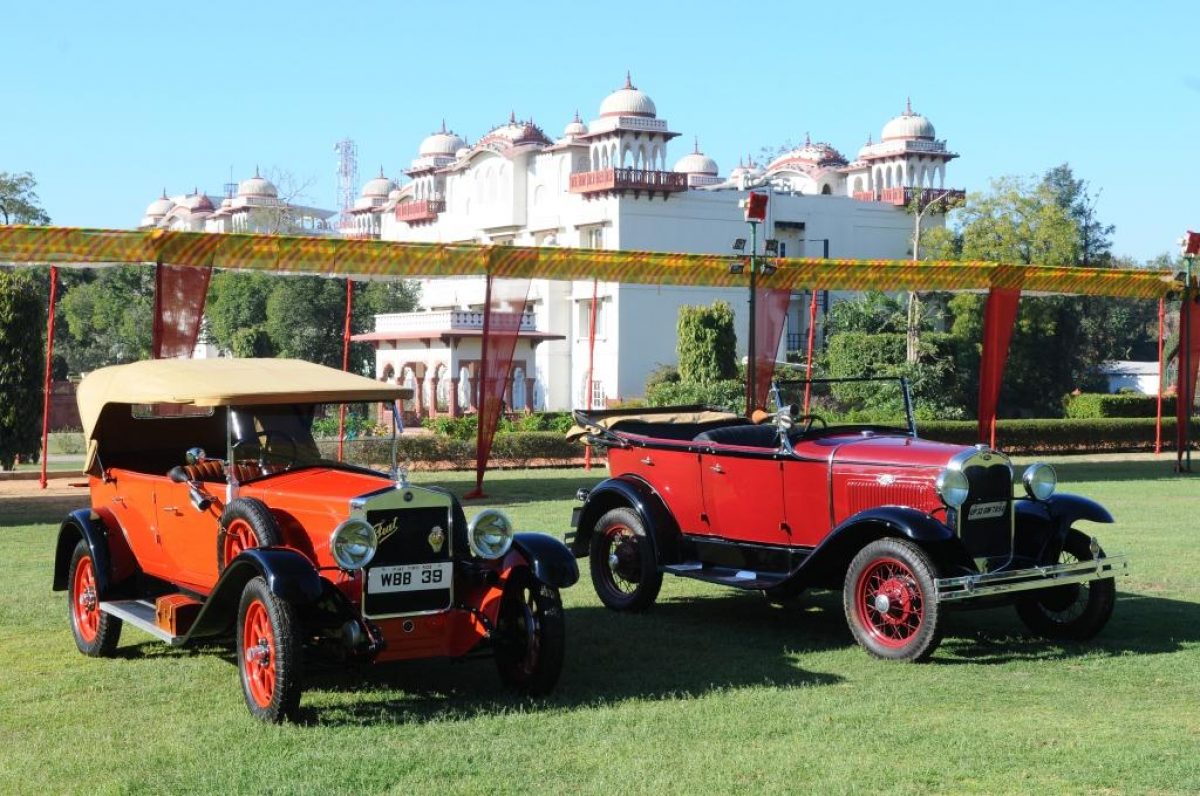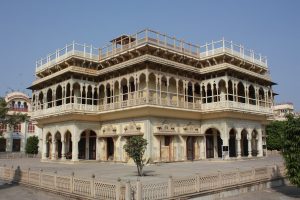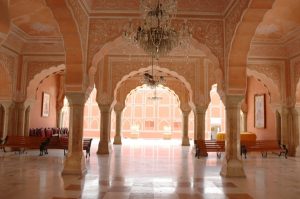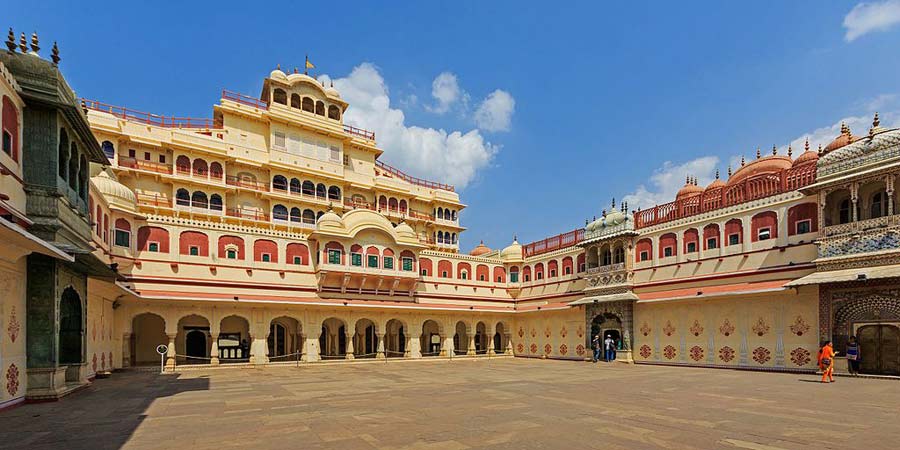Jaipur City Palace: Sitting at the center of the city, City Palace Jaipur holds an important place in the state of Rajasthan because it tells you about the history of Jaipur. Considered as the first planned city of medieval India, Jaipur is currently the capital of Rajasthan and had played a crucial role in its history, especially in the 1700s when the capital was shifted from Amer to Jaipur. Technically, the city is divided into mainly nine blocks with the City Palace at the center and many other important palaces are also lying at its stretches such as the famous Hawa Mahal, which is also popularly known as the “Palace of Winds”.
Scroll down to learn more about this amazing and strategically one of the important palaces of Jaipur, so that when you opt for a Jaipur tour you do not forget including Jaipur City Palace.
History of City Palace Jaipur
Undoubtedly, there is no dearth of palaces and forts in Jaipur. So, the question is what makes Jaipur City Palace so important. Apart from its architectural style which is a blend of Islamic Mughal and Hindu Rajputana style, this palace is also popular because of the history of its construction.

The construction of City Palace Jaipur started in 1729, but it ended in 1732. It all started with the decision of Maharaja Sawai Jai Singh II in 1726 when he thought of shifting his capital from Amber or Amer to a new city known as Jaipur due to the surging population of Amer.
Maharaja Sawai Jai Singh II, who was a great thinker had a planned city in mind and with the help of his architects Vidyadhar Bhattacharya and Shilpa Shastra, he built the walls of the Jaipur city of Jaipur on the principles of Vastu Shastra or the Indian science of architecture.
Whether you take a look at the palaces or temples or even gardens, all have its own architectural legacies and are constructed by keeping in mind Vastu. Even the Grand fort complexes or other the awe-inspiring palaces that still take you back to the glorious days of Jaipur are constructed on the basis of scientific principles that can amaze you when you visit it.
Throughout the rule of Kachwaha Rajputs, Jaipur City Palace served not only as a royal residence but also as a very crucial spot of control of Rajputana. Further, you will be surprised to learn that almost one-seventh of the old Jaipur city area is covered by none other than Jaipur City Palace complex. A fusion of Mughal and Rajput architecture style, this palace is still a home of the royal family, particularly the most part of Chandra Mahal that lies in the vicinity of the City Palace.
The beautiful palace complex is flooded by tourists all year long and leaves an everlasting impression on the hearts and minds of the people with its gigantic entrance gates, splendid doorways, murals, and the breathtakingly beautiful view of the palaces and museums of the Jaipur City Palace.
Important places to take a look at City Palace Jaipur.
There are many important points to see in the City Palace and these are:
Mubarak Mahal

Starting with Welcome Palace or Mubarak Mahal which has an entry through Virendra Pol and was built in the late 19th century especially for the dignitaries who visited the palace during the reign of Maharaja Madho Singh II.
This reception center is famous for its multi-arched and colonnaded construction which is a reflection of Islamic, Rajput and European architecture style by the architect Sir Swinton Jacob. This is also the place where the Maharaja Sawai Man Singh II Museum is present and unveils to you a collection of magnificent royal costumes and shawls, such as Kashmiri pashmina.
However, the most famous of all clothes exhibited here is the capacious clothing of Sawai Madho Singh I which is 2m tall, 1.2m wide and 250 kg in weight.
The Armoury
If you want to take a look at the collections of weapons which are elegantly engraved and inlaid then the Anand Mahal Sileg Khana o the Maharani’s Palace is your place to visit as it houses the Armoury.
Diwan-i-Khas (Sarvatobhadra)
 Diwan-i-Khas is an inspiration of Mughal architecture and is placed between the Armoury and the Diwan-i-Aam art gallery. This is an open courtyard also known in Sanskrit as Sarvatobhadra and you can find at its center a pink-and-white gallery which is marble-paved and was used Hall of Private Audience.
Diwan-i-Khas is an inspiration of Mughal architecture and is placed between the Armoury and the Diwan-i-Aam art gallery. This is an open courtyard also known in Sanskrit as Sarvatobhadra and you can find at its center a pink-and-white gallery which is marble-paved and was used Hall of Private Audience.
Here only the maharajas and the important ministers used to meet and consult on important matters. The most striking part of this Diwan-i-Khas is the two enormous silver vessels, each of these is 1.6m in height and is one of the largest silver objects present around the world.
Diwan-i-Am Art Gallery
Diwan-i-Am (Hall of Public Audience) has been currently transformed into an art gallery that has some interesting exhibits including a copy of the entire manuscript of Bhagavad Gita apart from miniature copies of other sacred Hindu scriptures.
Pitam Niwas Chowk
Pitam Niwas Chowk is situated in the inner courtyard of the Jaipur City Palace and has four glorious gates that represent the four seasons. On one hand where the Peacock Gate embodies autumn, there the Lotus Gate represents summer, the Green Gate signifies spring, and finally last but not least the Rose Gate depicts winter.
Ridhi Sidhi Pol
Ridhi Sidhi Pol leads you to the Pritam Niwas Courtyard and has grand Interiors with beautiful wall paintings, motifs, artifacts, etc.
Chandra Mahal

Now, coming to the private palace of the Jaipur City Palace which is located beyond this chowk (square) the Chandra Mahal, is still the royal residence where you are allowed to take a 45-minute Royal Grandeur guided tour in some selected areas. It has 7-storeyed and has a museum which is meant for the general public.
Sri Govind Dev Ji Temple
You can even find the amazing Sri Govind Devji Temple situated inside the City Palace in Jaipur. This temple of Lord Krishna holds a significant position for the Hindu devotees as it was brought from Vrindavan by the King Sawai Jai Singh II to the palace.
From the old cannons to grandeur courtyards, you can find here everything that can leave you spellbound and even when you leave this place the beautiful statues, murals, clock tower, chariots, etc. present here get retained in your memory.
Location of the City Palace and the best time to visit it
Jaipur City Palace is located in the northeast of the grid-patterned center of the city of Jaipur. You can visit it anytime around the year but if you want to remain free from the hot climate of Jaipur then go anytime between the months of October to March as the weather is pleasant at this time of the year.
- Address: Jaleb Chowk, Opp Jantar Mantar, Jaipur, Rajasthan
- Entry Fee: For Foreign Tourists – INR 500 and for Indian tourists – INR 190
- Visiting Time: 9:00 AM – 5:00 PM
- Visiting Duration: Around 2 hours

